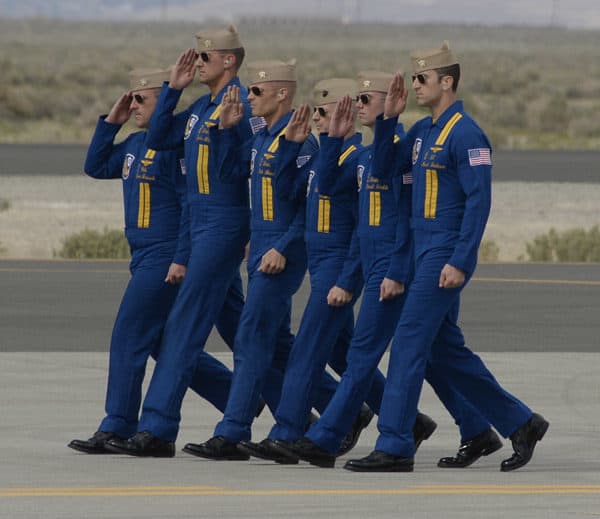Air Force Thinks Diversity Is a ‘Wartime Imperative’
Bradley Moore, American Renaissance, May 21, 2019
Years ago, I took flight lessons because I wanted to be a fighter pilot. I read Bogeys and Bandits: The Making of a Fighter Pilot, an incredible account of how these heroes train. One passage struck me:
With the possible exception of professional sports, the military was the most equal of all equal opportunity employers. The volatile subjects of race and discrimination and ethnicity, at least around the ready rooms of naval aviation, had dissolved into such non-issues that the color of one’s skin was scarcely noticed. As a burning issue, race relations had been replaced by the new hot button subjects — gender integration and homosexual rights. But still, you didn’t see many black faces in fighter cockpits. No one could say exactly why. It had mostly to do with the fact that, still, an appallingly small percentage of black kids were graduating from universities, and an infinitesimally smaller percentage of those were applying for military flight training. (p. 14)
It was remarkable that there were so few “black faces” working for such an “equal opportunity employer.” The book was published in 1997, but not much has changed. The Air Force Times reported last month that the “lack of diversity worries the Air Force.” Ninety-three percent of Air Force pilots are white. The “Air Force and a bipartisan pair of senators” want to create a “more diverse generation of pilots” by introducing flight training to JROTC (Junior Reserve Officer Training Corps).
This “problem” isn’t new. In an article published February 21, 2009, in the Air Force Times, black Brig Gen. A.J. Stewart complained that the percentage of black pilots had been declining for 20 years, and that fewer than 2 percent of pilots were black. The article said the drop in black pilots is “[hard] to explain but probably stems from blacks being underrepresented in technical fields.”
Current Air Force chief of staff Gen. David Goldfein argues diversity is a “wartime imperative” and said the “monolithic ethnic background” in the Air Force “stunts innovative thinking.” Stars and Stripes reported the same problem in the Navy: Only 2 percent of pilots are black. The Navy’s innovation must be stunted, too.
Just one black pilot flew the secret spy plane, the SR-71 Blackbird. The first black member of the Navy’s Blue Angels aerobatics team quit after he decided he wasn’t up to the job. When he was hired, white pilots grumbled that he was an affirmative-action hire.

US Navy Blue Angels pilots salute before entering aircraft at Fox Field. (Credit Image: © Gene Blevins/ZUMAPRESS.com)
The push for diversity continues. In 2016, a top Air Force general attacked the Thunderbirds (the aerobatics team of the Air Force) for being too white: “[N]ot only is there a lack of diversity, but the number of applicants to make the world-famous team has taken a puzzling drop in the past two years.”
All the services have the same complaint. In 2014, Army Times complained there were too many white officers. In 2016, Marine Corps Times announced the Corps was studying “the current mindset of African American youth” to get them to sign up. In 2015, an article in the USA Today was called “Pentagon’s elite forces lack diversity.” Of course, to get “diversity” you lower standards.
In fact, “the most equal of all equal opportunity employers” has promoted incompetent blacks for years (see this excellent 2008 article from American Renaissance). We had better avoid a serious military engagement, lest we find that diversity isn’t our “greatest strength.”















